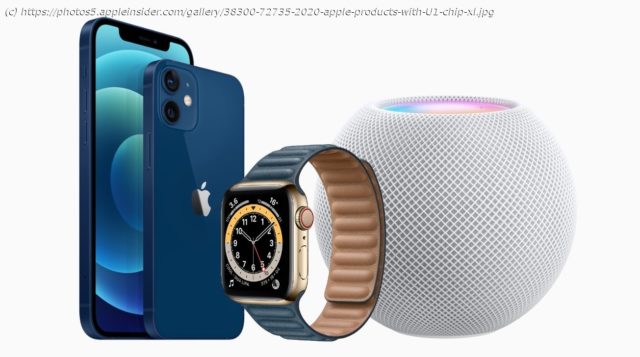Apple has added its U1 chip to even more products, and is clearly planning to make Ultra Wideband a major feature of its device ecosystem? Here’s a breakdown of UWB, what it does now, and what it can do for you.
Apple has added its U1 chip to even more products, and is clearly planning to make Ultra Wideband a major feature of its device ecosystem? Here’s a breakdown of UWB, what it does now, and what it can do for you. Alongside the launch of its iPhone 12 range of smartphones, Apple introduced a number of other products over the course of multiple special events. The appearance of Ultra Wideband support in the HomePod mini, as well as the Apple Watch Series 6, generated more conversation about the technology and its potential future use by the company. Some may still be bewildered by what Ultra Wideband actually does, and how it can benefit them down the line. Outside of Apple’s explanation that it can be used for some location tracking, the company hasn’t really offered much in the way of an explanation for Ultra Wideband in practice, outside of AirDrop prioritization. In this article, we aim to demystify Ultra Wideband. Commonly referred to as UWB, Ultra Wideband is a wireless protocol for communications, which functions using radio waves. At its most basic, it can be used to transmit messages between devices, making it somewhat analogous to Bluetooth or Wi-Fi. As it has potential applications for personal area network communications, namely allowing devices on a person to communicate with each other, there is a lot of crossover with the more established Bluetooth. However, the way it operates means it can offer some more functionality the other two communications types cannot provide. The main feature it enables is highly-accurate location tracking, with devices using UWB potentially able to identify the distance and even the location of other hardware relative to itself to within a few inches. This means it has potential uses for device tracking services, like an enhanced form of the Find My app. While it has some industrial purposes, including radar systems, medical imaging, and even tested to handle signaling on the New York City Subway, the main use of the technology for consumers is still likely to be inter-device communications and short-range location tracking. As an idea, UWB has been around for quite some time. Only relatively recently has it risen in prominence, mainly due to Apple’s inclusion of the technology in the iPhone 11. The FiRa Consortium, which includes Samsung, Oppo, Xiaomi, and other firms in its membership, was formed in 2019 to encourage the creation of UWB for consumer devices that works across platforms, such as between different models of smartphone. While the group exists, it so far doesn’t count Apple as a member, and it is unclear if Apple’s implementation will work with FiRa’s version in the future. Like other radio-based communications systems, UWB relies on a combination of transmitters and receivers on devices. While Wi-Fi and Bluetooth use a relatively narrow frequency ranges to handle communications between devices, UWB does things completely differently. As the „Ultra Wideband“ name suggests, UWB does away with narrow ranges and instead transmits data across a far larger frequency band. While a typical Wi-FI channel width may be 20MHz,40MHz, or 80MHz in size, UWB instead uses a bandwidth range of 500MHz or more for its transmissions. UWB typically can afford to do this because it operates in a large band that isn’t typically used for other types of communications, which the FCC authorized the range of 3.1GHz to 10.6GHz for unlicensed use. For Apple’s U1 chip, which is used for Apple’s own Ultra Wideband applications, a teardown by TechInsights indicated it transmitted on two frequencies: 6.24GHz and 8.2368GHz. An unusual characteristic of UWB is that it is a pulse-based system, one that repeatedly blasts out signals then turns off before repeating. While each pulse can take up the entire range of bandwidth assigned to it, the extremely short transmission times of each pulse, as well as the relatively low-power nature of consumer-oriented UWB, makes it highly unlikely for it to interfere with other systems in the same ranges.






